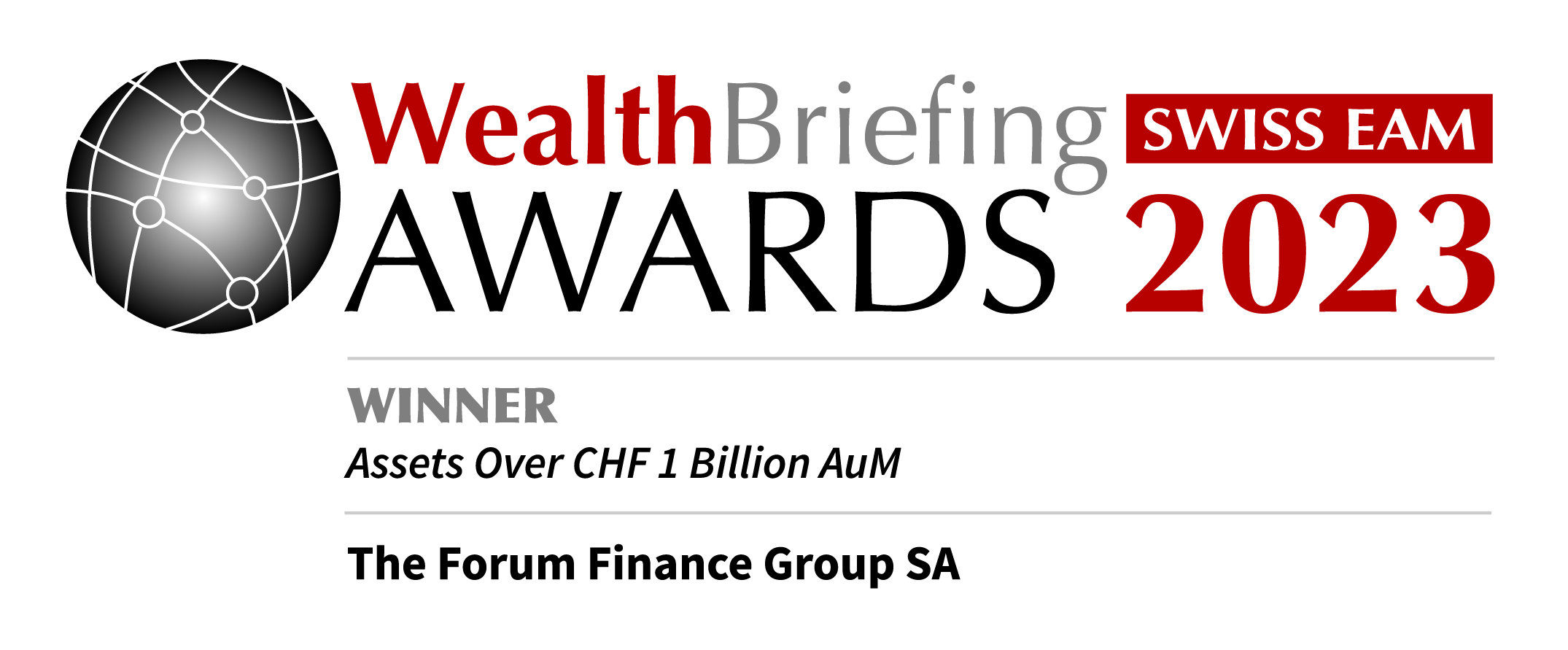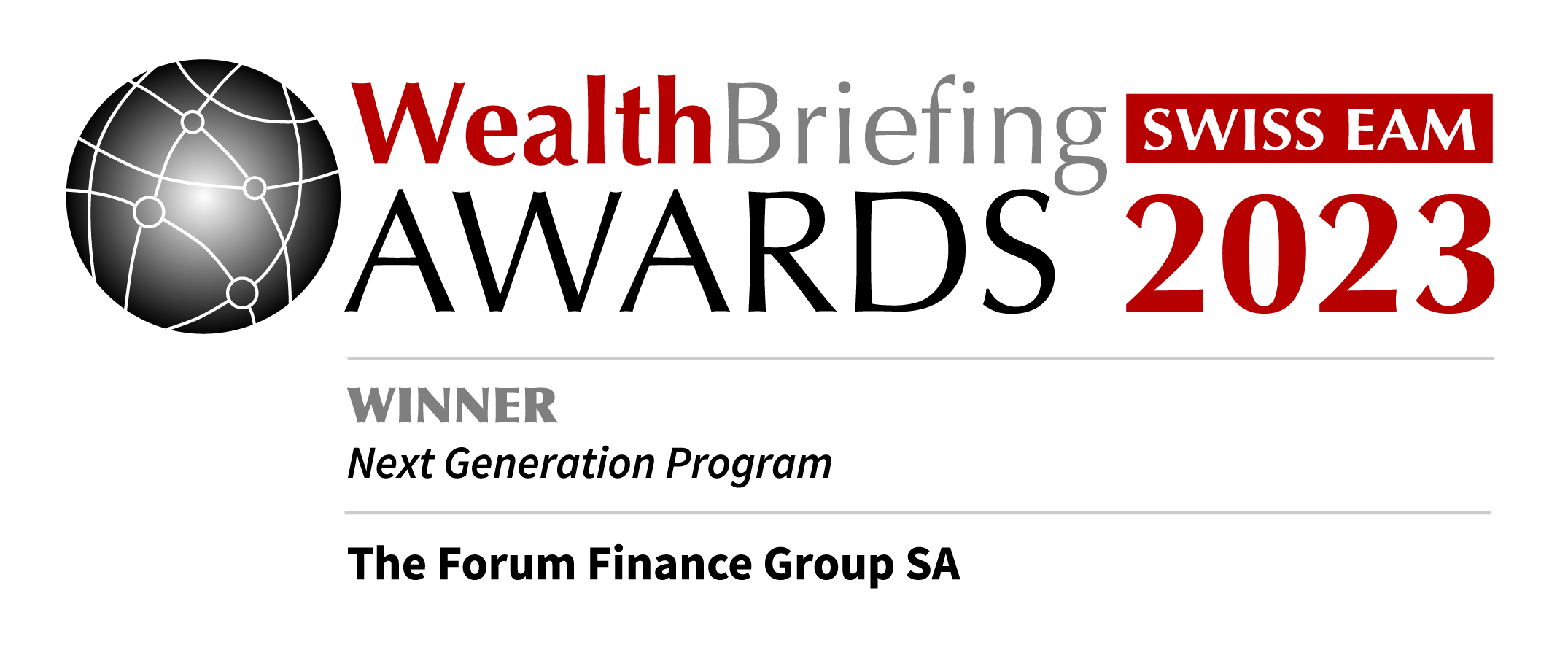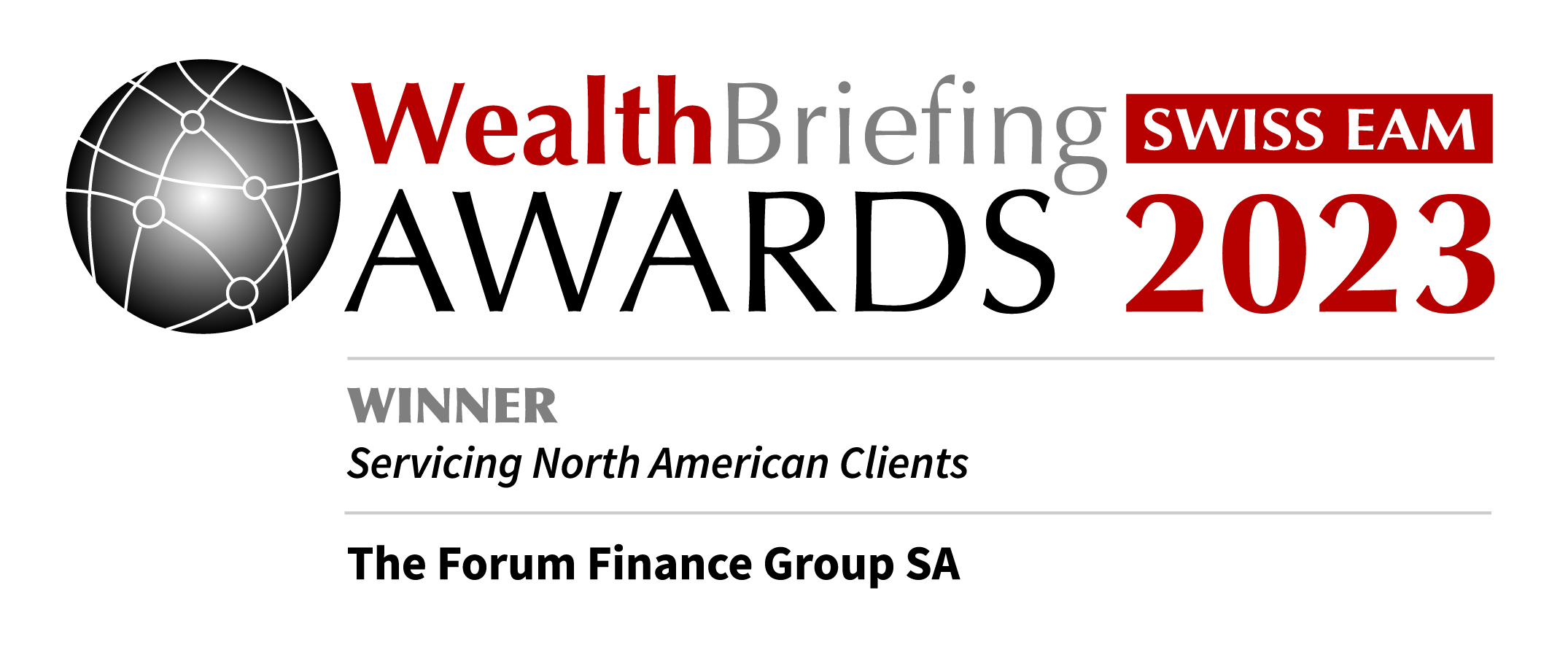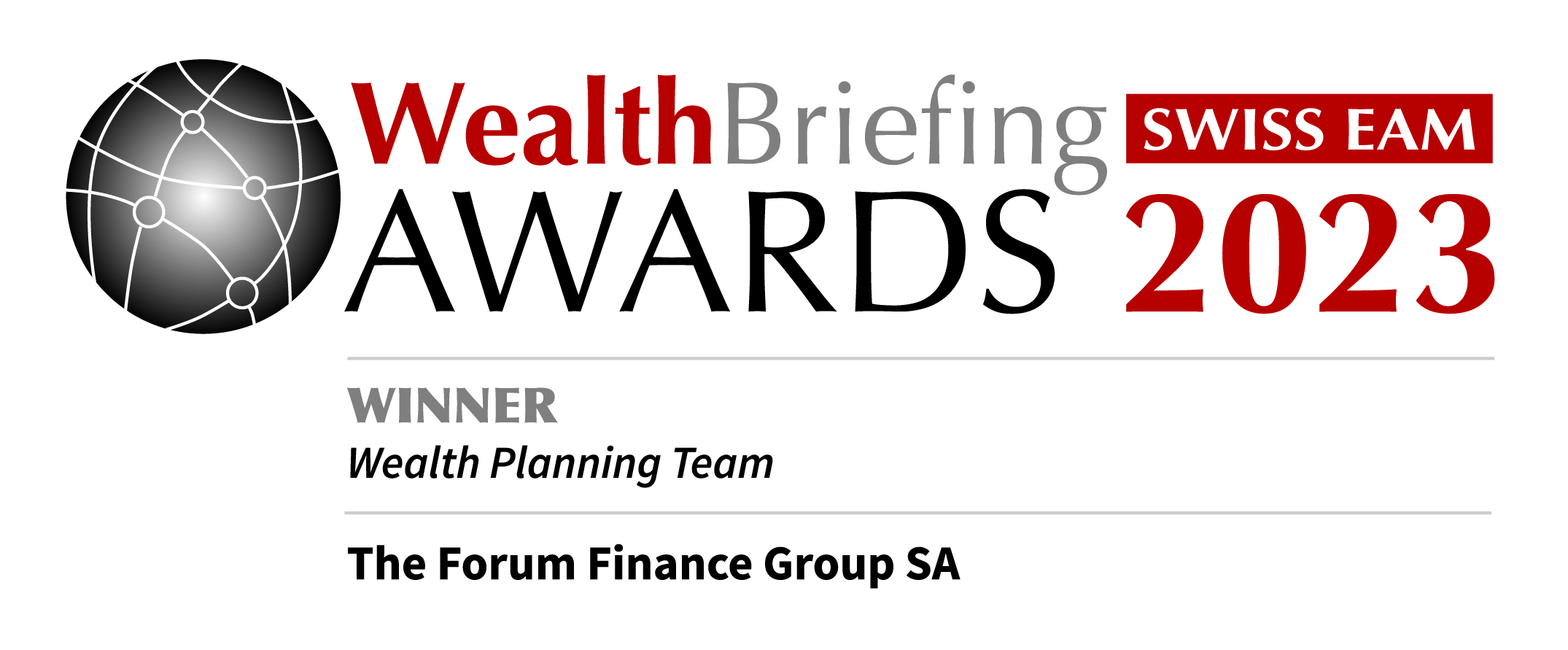Investment Perspectives 2023 | Mid Year review & Outlook
26 July 2023Investment perspectives,Financial News
Executive Summary
Risky assets thrived
After a tough 2022 for equity and fixed income assets, triggered by the rapid pace and magnitude of the hiking cycle initiated by the Fed and ECB, the first half of 2023 offered a relief with strong return of financial assets despite uninspiring level of economic activity in Germany and China. The Government and Investment Grade bonds had a reasonable start to the year while commodities suffered from economic growth concerns. Equity indices posted strong results, but return differences across sectors and stocks were particularly notable. The dispersion within equity markets became particularly accentuated during the second quarter after the markets had given back most of their initial strong performance at the start of the year due to the collapse of a few banks in February and March, reiterating the nasty bite fast rising rates can have on corporate balance sheets.
Narrow equity market participation
Concentrated portfolios exposed primarily to large technology stocks were rewarded. Only a handful of tech shares have been responsible for most of this year’s gains despite higher rates. Indeed, the seven-largest companies in the S&P 500, all tech companies, are up 86% on average year to date!! Meanwhile, the other 493 companies, in aggregate, have barely moved this year. In Europe, technology companies ASML and SAP have been joined by LVMH and L’Oréal as key contributors to the market surge explaining more than 40% of the index return.
U.S. growth resilient, Germany in recession
Early June, the World Bank revised its forecast for US growth for 2023 to 1.1% from 0.5% in January while China’s growth is expected to climb to 5.6%, compared to a 4.3% in January. The modest rebound in activity in China will primarily benefit domestic sectors, in particular services. Euro area GDP growth is now expected at 1.1% and 1.6% in 2023 and 2024 respectively. The key positive change underpinning this revision is the fall in energy prices and abating supply-chain disruptions.
Hawkish tone reiterated by the FED and ECB
The persistence of core inflation has emerged as a key risk as it could lead to more monetary tightening. However, lower energy prices have reduced headline inflation, with positive effects on demand and financial markets. The FED decided to hold rates unchanged in June, but most members agreed that at least one additional 25 basis points (bps) hike will be required by year end. In June, the ECB raised its deposit facility rate by 25 basis points (bps) to 3.5% and made it clear that further rate hikes should be expected at the next meeting in July, while in Japan the Bank of Japan remained dovish and will continue to support the fragile economic recovery despite stronger-than-expected inflation.
Commodities weak again
Commodity index recorded negative returns in Q1 and Q2, making it the worst asset class in our investment universe with -5.0% and -2.5% respectively as energy prices fell as global growth slowed, energy conservation and mild weather helped reducing energy demand, while rapid expansion of LNG capacities mitigated pressures in natural gas market. Prices of base metals eased due to weaker global demand in particular the slower-than-expected demand rebound in China. Additionally, increased metal supply has put additional pressure on prices. In precious metals, gold delivered a positive return (+5.23% in 1H).
Too few equities in risk-on
Our defensive allocation throughout 1H favoured alternative investments such as hedge funds for their ability to seize opportunities in periods of high volatility and to limit drawdowns and gold, which performs reasonably well in periods of stress and inflation. We maintain our relatively defensive allocation with a preference for alternatives at the expense of equities. Our allocation remains well diversified, which should benefit from some inevitable mean-reversion or provide some protection if markets take a turn for the worse.
Table of contents
- EXECUTIVE SUMMARY
- 2023 – HALF-YEAR: REVIEW OF OUR INVESTMENT THEMES
- 2023: ECONOMIC AND POLITICAL DEVELOPMENTS
- FIRST HALF 2023: FINANCIAL MARKETS
- SECOND-HALF 2023: ECONOMIC OUTLOOK
- ASSET CLASS VIEWS – 2023 - JUNE 2023
- SECOND-HALF 2023: INVESTMENT IMPLICATIONS – JULY ASSET ALLOCATION
- ASSET ALLOCATION GRID
Download the Investment Perspectives
Newsletter | June 2023
12 June 2023Newsletter,Financial News
THE US DOLLAR RECOVERED ALL OF ITS YTD LOSSES AGAINST THE EURO IN MAY
+ 36.3% THE PERFORMANCE OF NVIDIA IN MAY
Investment perspective
In May most equity markets were rangebound as investors’ attention was gripped by the debt ceiling talks in Washington to avoid a default by the US government. Japanese equities continued to perform well, however, as did US growth stocks, in particular those of companies heavily involved in Artificial Intelligence. European and emerging market equities struggled and ended the month with small losses. While European bond yields were mostly stable, the Treasury yield curve shifted much higher as investors reduced some of their exposure to US debt in view of the risk of a first-ever US default; 2-year and 10-year Treasury yields rose by 40bps and 22bps, from 4.01% and 3.43% to 4.41% and 3.65% respectively. In this context, the US dollar performed well as it recouped its year-to-date losses against the euro, with a 3% return in May. Weakness was observed in commodity prices on concerns over softer global demand; the prices of industrial metals, such as copper and iron ore, fared poorly, as did oil prices, with a barrel of WTI oil dropping by more than 11%.
Market expectations relative to the path of the Federal Reserve’s monetary policy have shifted quite significantly during the last weeks. While there is a broad consensus that the prospect of further interest rate hikes appears to be very limited from now on, markets repriced their expectations in May for the end-2023 level of Fed funds. From a point where three rate cuts by the end of the year were anticipated, markets are now pricing in one rate cut only. This is more closely aligned with the Federal Reserve’s outlook as it has consistently pushed back against the idea of rate cuts this year already.
As often observed in the past, Democrats and Republicans finally reached an eleventh hour deal to avert the first-ever default on US government debt. The legislation that suspends the $31.4 trillion debt ceiling will remain in effect until 2025, when one is likely to face a similar situation once again.
Investment strategy
At the onset of summer, we are sticking to our defensive portfolio asset allocation. We remain cautious in view of a slowdown of economic activity, higher for longer interest rates, tighter bank lending standards, and the risk of rising bond yields. Following the US debt ceiling deal, a deluge of Treasury bill issuance is coming; this could drain liquidity from the markets and push bond yields higher which could in turn also impact stock prices negatively. The narrow rally of the US stock markets is also of concern based on past obser-vations. That is why we are also maintaining our diversified allocation. We are seeing some early signs that a rotation might be taking place in the markets. Strategies which have underperformed up to now appear to finally be attracting some attention from investors. It is too early to tell whether these are sustainable trends, but we see good fundamental reasons to remain invested in this way.
YIELD CURVES COULD BE UNDER PRESSURE AS US DEBT ISSUANCE MIGHT DRAIN MARKET LIQUIDITY
Portfolio Activity/ News
May was another flattish month for the portfolios as positive and negative monthly returns for the various underlying positions cancelled each other out. The best contributions were provided by the global technology fund, the multi-thematic fund, global convertible bonds, the systematic global macro strategy, and by frontier markets’ equities. For non-USD denominated portfolios, the strong appreciation of the dollar also contributed to the performance. Alternative strategies overall also added to the performance of the portfolios The main detractors over the past month were European value and Chinese equities, emerging market corporate debt as well as the specialty metals fund. As often highlighted, the performances of some indices this year are quite deceiving as they have been driven by a small number of stocks and sectors. The dispersion of performance between the value and growth styles, between small and large caps, between the different sectors, as well as between different regions is striking. As an illustration the spread of performances between our best and worst performing equity funds was over 40% as at the end of May!
Download the Newsletter
Newsletter | May 2023
10 May 2023Newsletter,Financial News
APRIL WAS A MUCH LESS VOLATILE MONTH FOR CAPITAL MARKETS
- 5.9% THE GAP AT THE END OF APRIL OF A US LARGE CAP EQUAL-WEIGHTED INDEX TO A MARKET CAP ONE
Investment perspective
The month of April proved to be much less volatile than the previous one. The major equity indices of developed markets recorded limited gains, whereas emerging market equities ended with small losses. Despite the prospect of additional rate hikes, persistent inflation and signs of slowing economic growth, equities proved to be quite resilient. This was due in large part to acceptable corporate earnings which beat expectations that had been consistently lowered by analysts over the past months. Bond markets also ended with modest changes even if volatility remained well above-average, in contrast to the fast declining volatility observed in equity markets. The yields of 2-year and 10-year Treasuries edged lower by 2bps and 5bps, respectively, to end-April levels of 4.01% and 3.42%, with Bunds behaving in a very similar manner. With markets still anticipating a number of rate cuts by the Federal Reserve in the second half of 2023, following a final 25bps hike in May, the US dollar continued to depreciate against other major currencies; the EUR/USD parity appreciated by 1.7% to end the month at 1.102.
With more than 85% of the S&P 500’s market cap having reported, earnings have beaten estimates by 6.6%, with 77% of companies topping projections. Earnings per share growth is on pace for - 1.3%, assuming the current beat rate for the rest of the season. Sales have beaten estimates by 2.8%, with 67% of companies doing better than expected. In Europe, the earnings season is somewhat less advanced but, out of the companies having already reported their results for the first quarter, 64% have beaten earnings’ estimates and 65% sales’ expectations. Overall, these results have been supportive for equity markets, especially as most of the US mega-caps beat expectations. The results of companies such as Microsoft, Apple, Alphabet, Meta Platforms, Exxon Mobil and JPMorgan Chase were cheered by markets and contributed to the outperformance of their stock prices in April.
Investment strategy
We maintained our defensive portfolio asset allocation in April. We remain sceptical about the potential for much higher equity markets in the near term, due to an expected slowdown of the economy, tighter bank lending standards, and markets’ overoptimistic anticipation for Fed rate cuts in 2023. We continue to observe sticky inflation data and the main central banks will not want to take the risk of making a policy mistake by cutting interest rates too early. If they were to cut rates, in contrast to their current outlooks, it would be because of pronounced weakness of the economy which is not being discounted by equity markets at present. We also believe that long-term bond yields could increase from the current levels. In that case, it would allow us to increase our fixed income allocation as well as the portfolios’ duration.
THE MARKETS’ EXPECTATIONS FOR 2ND HALF RATE CUTS DO NOT MATCH THE FED’S POLICY PATH OUTLOOK
Portfolio Activity/ News
April was a flattish month for the portfolios as monthly changes for the different positions tended to be limited and ended up by neutralising one another overall. The medtech and services fund provided the best contribution, with European value equities, the real assets fund, defensive equities, and the trend-following CTA strategy also producing some positive contributions. The main monthly detractors were the global technology fund, global convertible bonds, Chinese equities, the multi-thematic fund, as well as the emerging market corporate debt fund. With the exception of global convertible bonds, all the other fixed income positions generated small positive contributions. Alternative strategies also added to the performance of the portfolios even if gains were modest. For non-USD denominated portfolios, the depreciation of the dollar meant that it was a detractor.
Download the Newsletter
Newsletter | April 2023
6 April 2023Newsletter,Financial News
STRESS IN THE BANKING SECTOR PUSHED YIELD CURVES MUCH LOWER
4.35% THE EXPECTED END-YEAR LEVEL OF THE FED FUND RATE
Investment perspective
The month of March was most eventful for capital markets. Three US banks collapsed following a run on their deposits and the Swiss government forced through the takeover of the 167 year-old bank, Crédit Suisse, by its rival UBS. This banking turmoil triggered a fall of equity markets and a plunge of bond yields. Markets also quickly repriced their expectations relative to the Federal Reserve’s hiking cycle, with rate cuts being anticipated for the second-half of 2023, once again. US federal authorities intervened quickly to protect both insured and uninsured deposits at Silicon Valley Bank and Signature Bank to restore calm in the markets. The merger of CS and UBS also contributed to remove some market stress even if Deutsche Bank found itself under heavy selling pressure for a brief period. The second half of March saw global equity markets rebound strongly and end the month with modest positive returns. The best performing asset in March was gold which benefited significantly from lower real bond yields and a weaker US dollar to appreciate by 7.8%.
A high level of volatility has been observed in bond markets for some time now, as a result of the fast pace of monetary tightening since early 2022. The moves that took place in March, however, proved to be even more extreme. The yields of 2-year and 10-year Treasuries collapsed from early-March levels of 5.06% and 4.08% to closing lows of 3.77% and 3.38%, respectively, a most significant shift of the US yield curve. By the end of March, expectations for the end-year level of the Fed’s fund rate had also dived to 4.35%, compared to an early-March level of 5.55%. In the Eurozone bond markets, comparable trends as in the US were observed, even if to a lesser degree; markets are now pricing in a end-year ECB policy rate of 3.4%, in contrast to 4% at the beginning of March.
Investment strategy
Our defensive portfolio asset allocation was maintained through March. We were close to being able to increase our fixed income allocation as bond yields kept on rising, but their sudden drop has prevented us from making this move so far. We had also got very near to our first target on the EUR/USD parity, with the objective of decreasing our dollar exposure. Then again, the unexpected banking turmoil trig-gered a reversal of the prevailing trend, taking away the opportunity to sell the US currency. We admit being some-what puzzled by the ongoing confidence of equity markets in view of the signals sent out by the bond markets. Were the Fed to cut rates this year, as currently priced in by markets, it would be due to a deeper slowdown of the economy, not the best framework for equities. That is one of the reasons why we have kept our underweight allocation towards equities.
The past month was a mixed bag for alternative strategies, but we continue to view them as an integral part of the port-folios. This is also the case for gold which has continued to provide real diversification and to behave more like a long duration asset, bringing defensive qualities to portfolios.
THE OPTIMISM OF EQUITY MARKETS IS IN STARK CONTRAST TO WHAT IS EXPRESSED BY BOND MARKETS
Portfolio Activity/ News
March was a modestly negative month for the portfolios as equity, fixed income and alternative asset classes all posted negative returns. US and European value funds were the largest detractors in the equity allocation, whereas the global technology fund produced a strong contribution as growth stocks outperformed. Our underweight duration exposure and our preference for credit strategies meant that most bond funds ended with limited monthly changes, except for the emerging market corporate debt fund which experienced a larger drawdown. The brutal reversal of bond markets also proved costly for trend-following strategies, in reason of their very short positioning on rates. In contrast, the discretionary global macro strategy performed very well. For non-USD denominated portfolios, the depreciation of the dollar also translated into a negative contribution for the portfolios.
In March two new funds were added to the model portfolios. The first one is a US value fund which replaced our previous US value one. The reasons for this change were an under-whelming performance of the prior fund recently, as well as an overweight exposure to the energy sector within the new fund. We also trimmed our discretionary Global Macro and trend-following CTA strategies to make room for a systematic Global Macro strategy based on fundamental and price-based indicators. The fund combines carry, fundamental, trend-following and value/reversion strategies, and displays a remarkable track-record over an extended number of years.
Download the Newsletter
Rejuvenation continues at Forum Finance
5 April 2023Press Releases,Press Releases & Sponsoring
Rejuvenation continues at Forum Finance
Geneva, 5th April 2023 – Geneva-based independent asset manager The Forum Finance Group SA has appointed two new independent Board members – Biba Homsy and Alain Couttolenc – and a new Partner, Tanja von Ahnen. By strengthening its Board of Directors and regularly giving access to capital to new partners, Forum Finance reinforces its attractiveness for talented individuals and sets the foundations for its ambitious plans for the future.

Biba Homsy is Founder and Partner of Homsy Legal, a law firm based in Switzerland and Luxembourg specialising in financial markets, compliance, and crypto assets. Prior to that, she led teams at the Swiss regulator FINMA for 5 years, and was also Chief Compliance Officer at Credit Suisse, in charge of Luxembourg and its European branches (France, Portugal, Ireland, Austria, Netherlands). She was appointed as one of the 30 global experts in crypto currency by the World Economic Forum (WEF). A lecturer at several universities on compliance, anti-money laundering and Fintech, she holds two master’s degrees in law (French and Swiss universities) and a certification from Harvard Law School on financial regulation.
Alain Couttolenc is Head of Development and External Relations at IPSOS, a global leader in market research. After starting his career in 1995 at Nielsen Mexico, he joined the Renault Nissan Group in 1999 to launch Renault in Mexico as Marketing Manager. After 8 years, he returned to Nielsen as Vice President for Latin America, before moving to Paris then to Geneva, as Managing Director of Nielsen Media and Marketing Effectiveness. Alain Couttolenc holds a master’s degree in marketing from the Kellogg School of Management and a degree in economics from the Universidad Iberoamericana de Mexico. He has been teaching marketing at La Sorbonne since 2011, is a member of the EFFIE Global Awards, a member of the Executive Committee of the Geneva Investor Circle, an invited member of the World Economic Forum’s community of experts, and a member of Trust Valley’s advisory board.
Tanja von Ahnen joined Forum Finance in 2022 after a 16-year long career in private banking at Banque Syz and RBC, primarily servicing wealthy families based in Latin America. Prior to becoming a private banker, she worked as an independent consultant and as a controller with Allianz Insurance. She holds a master’s degree in Economics from Zurich University and Bachelor degree in Economics from Göttingen University.
A solid structure and governance
With nearly 30 years of steady growth, Forum Finance has proven its durability. Its robust and transparent governance guarantees the integrity of its leadership and allows it to welcome new partners to ensure its continuity. With CHF 2 billion under management, it has sufficient resources to finance its future growth. This solidity is further underlined by its FINMA CISA licence. Finally, registered with the SEC, Forum Finance can also look after American clients.
Offering a compelling alternative to wealth managers wishing to ‘future proof’ their activities
In view of the recent regulatory changes in the Swiss independent asset management industry, Forum Finance offers a solid framework with an equitable and collaborative culture for wealth managers who have an entrepreneurial spirit.
Hippolyte de Weck, CEO, said: “adding high quality talent is the greatest challenge for any company. We are therefore particularly pleased with the calibre of our new board members and our new partner. They will provide us with valuable guidance and support to grow our business further and prepare ourselves for the decades to come“.
For additional information, please contact:
Egon Vorfeld
The Forum Finance Group SA
T: +41 (0)22 552 83 00
E: vorfeld@ffgg.com
ffgg.com
Ricardo Payro
Payro Communication Sàrl
T: +41 (0)22 322 13 17
E: :rp@payro.ch
payro.ch
About Forum Finance
Founded in 1994 in Geneva, Forum Finance offers private banking and asset management services to a high-end global clientele. It has 25 employees who manage and supervise CHF 2 billion in assets. The company is regulated and supervised by the FINMA under the CISA licence and is registered with the SEC as investment adviser.






